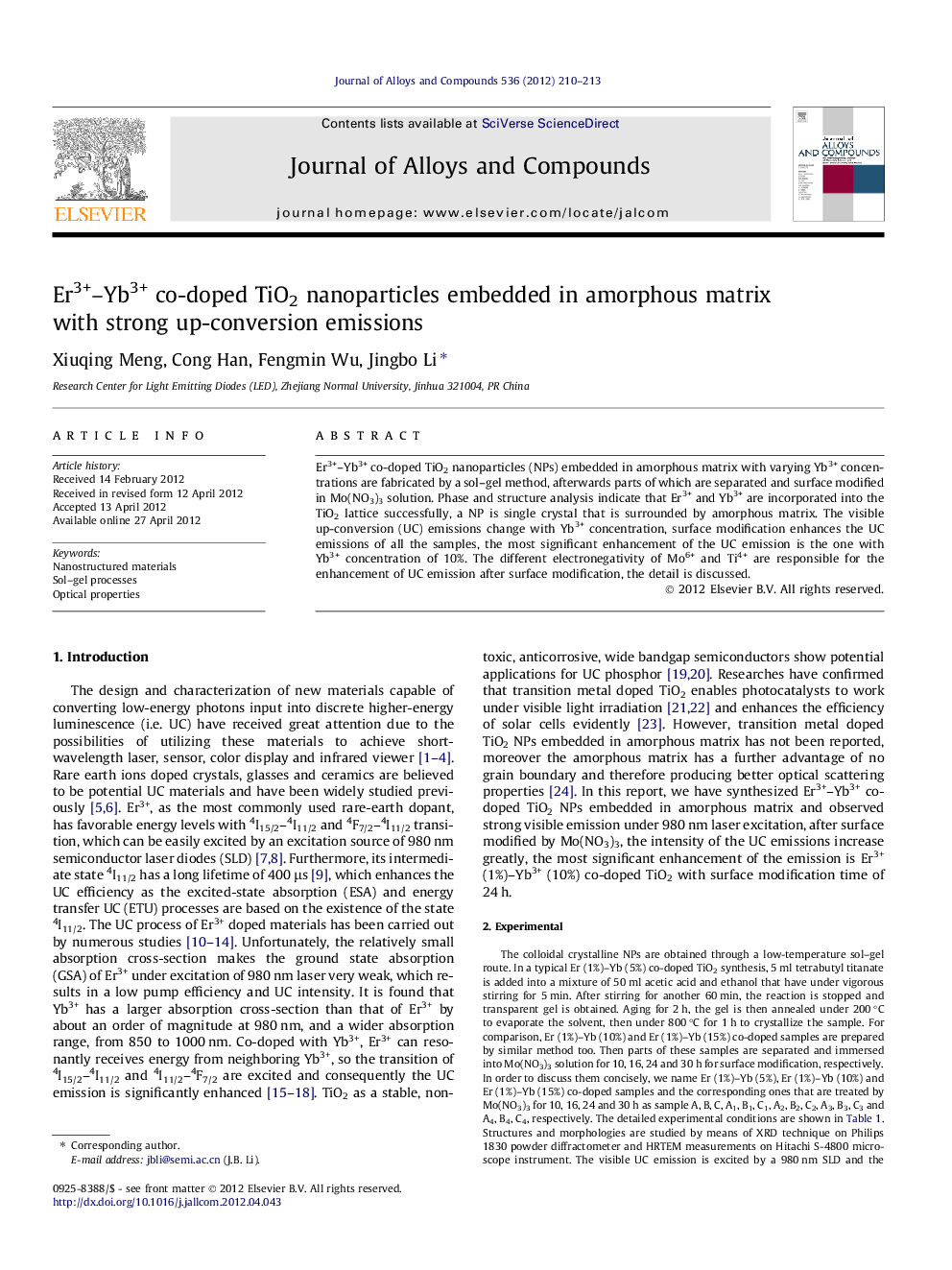| Article ID | Journal | Published Year | Pages | File Type |
|---|---|---|---|---|
| 1615794 | Journal of Alloys and Compounds | 2012 | 4 Pages |
Er3+–Yb3+ co-doped TiO2 nanoparticles (NPs) embedded in amorphous matrix with varying Yb3+ concentrations are fabricated by a sol–gel method, afterwards parts of which are separated and surface modified in Mo(NO3)3 solution. Phase and structure analysis indicate that Er3+ and Yb3+ are incorporated into the TiO2 lattice successfully, a NP is single crystal that is surrounded by amorphous matrix. The visible up-conversion (UC) emissions change with Yb3+ concentration, surface modification enhances the UC emissions of all the samples, the most significant enhancement of the UC emission is the one with Yb3+ concentration of 10%. The different electronegativity of Mo6+ and Ti4+ are responsible for the enhancement of UC emission after surface modification, the detail is discussed.
► We fabricate Er3+–Yb3+ co-doped TiO2 nanoparticles (NPs) and parts are surface modified with Mo(NO3)3. ► Er3+ and Yb3+ are incorporated into the TiO2 lattice, a NP is single crystal surrounded by amorphous matrix. ► Visible up-conversion (UC) emissions change with Yb3+ concentration. ► Surface modification enhances the emission and results in a highest intensity with Yb3+ concentration of 10%. ► The different electronegativity of Mo6+ and Ti4+ are responsible for the enhancement of UC emission after modification.
